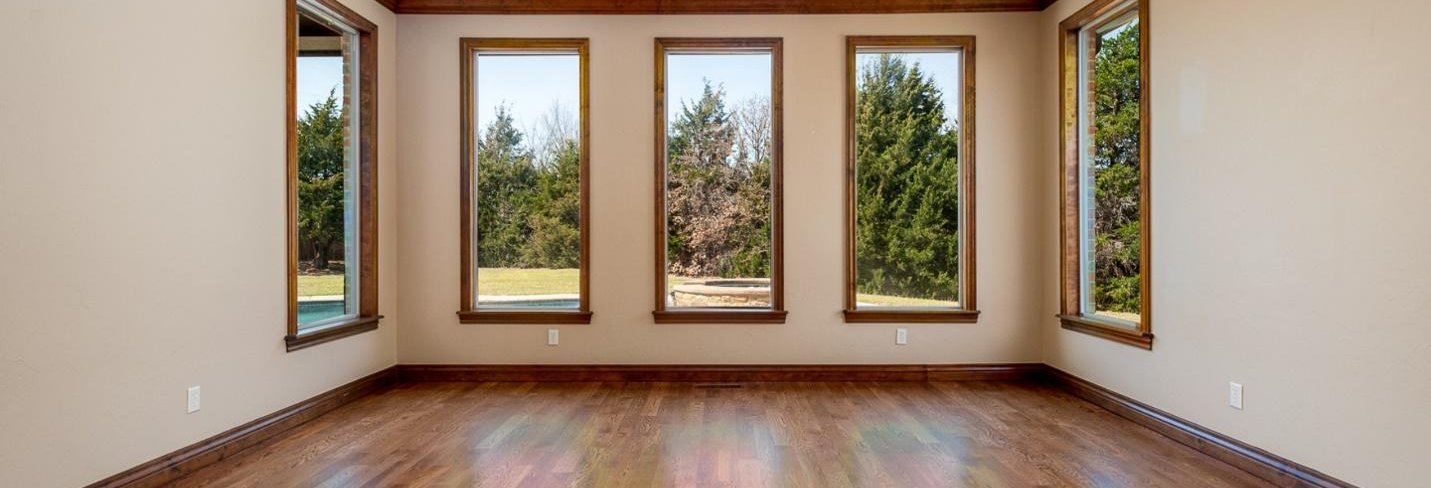As a hardwood flooring owner, nothing is more frustrating than unsightly gaps between the planks. Besides the negative impact of gapping on your home’s appearance, it can also make walking on the floors uncomfortable. Additionally, gaps allow the hardwood to rub against one another, resulting in annoying squeaks.
Suppose you’ve recently invested in a hardwood flooring installation and are suffering from gapping floors. In that case, you’ll be pleased to learn that, in most cases, the issue can be resolved with minor alterations.
Here, we’ll examine the primary causes of gaps and provide you with information on how to fix gaps in old hardwood floors.
What Causes Gaps in Hardwood Floors?
Hardwood gapping is a common issue in old and new homes alike, and it’s well-understood why it happens. Overall, the cause of your gapping can be broken down into two categories:
- Environmental: When you install hardwood in your home, you’re receiving a living, breathing entity. Although the wood has long since been milled, it still retains the flexibility that live wood has. As such, your hardwood will react and move to different environmental circumstances like humidity level and temperature.
- Structural / Installation: Issues with your home’s structure or the initial installation itself is the other primary cause of gapping. If you’re a novice DIYer, hiring a professional like is your best option for a clean installation that’s issue free.
Temperature Changes
Wood is an extremely responsive material, and it’s quite sensitive to changing temperatures. Your hardwood flooring will react to the surrounding temperatures and may change position accordingly. This is even the case with engineered flooring. When the air cools, your flooring will contract, resulting in gaps between the planks. This is especially common during the winter months, and it’s during this time that most homeowners first notice their gapping issues.
Warm temperatures can also cause gaps. As the temperature rises, your flooring will expand, putting pressure on points it previously hadn’t. If drastic enough, this can open gaps that did not exist before.
Temperature changes in your hardwood are not always dependent on the season, either. If you have baseboard heating, radiators, or air conditioning units, these can also affect the temperature of your wood planks.
Seasonal Fluctuations in Humidity
Also known as seasonal gapping, changes to your flooring can be largely attributed to fluctuations in humidity. Your flooring retains quite a bit of moisture, and as the environment dries out in the winter, so do your floorboards. With all this water gone from your floorboards, the planks will shrink slightly, causing gaps between them.
Like heaters and air conditioners, the changing humidity level from dehumidifiers can also impact your flooring’s density if placed too close to the floor.
Improper Acclimation
All experts agree that the key to a long-lasting, successful hardwood flooring installation is acclimation. Acclimation is the process by which you allow your flooring to adjust to the conditions of your home. Your home has a unique environmental biome to it, and you need to allow your flooring time to settle.
When flooring is installed before the acclimation process is over, you’ll deal with an astonishing amount of contraction and expansion after the fact. When severe enough, this can easily ruin the entire project. You’ll be left with gaps in your flooring that are impossible to ignore.
The bare minimum amount of time you should acclimate for is three days. However, many professionals recommend waiting up to two weeks or even more. Always choose the side of caution, as you can’t over-acclimate.
Poor Installation

If you took on a do-it-yourself approach to your flooring installation and lacked the requisite skills, your gaps could be caused by improper installation.
It’s very common for novice installers to seat the planks incorrectly, resulting in wooden pieces that do not line up. Hardwood flooring is secured by a variety of different joint types and knowing how to properly align them is crucial. When done incorrectly, you’ll be left with uneven flooring that doesn’t sit flush against the adjacent planks.
Another installation issue is uneven, or missing nailing. If you or your flooring installer failed to space out and hammer in the hardwood nailing correctly, your boards will bend out of place, causing gaps.
Subfloor Issues
Pre-existing structural problems with your home could also be a cause of hardwood floor gaps, although this is less common. If it’s discovered that this is the case, corrective action should be taken as soon as possible.
The subfloor is the base upon which your hardwood is installed and if there are any irregularities, it’ll seriously affect the flooring. Some commons subfloor problems that contribute to gaps include:
- Uneven Subfloor: An improperly installed subfloor will be unbalanced, making it difficult for your hardwood planks to stay put. Oftentimes, contractors will lay subfloor quickly and as a result, will miss crucial nail points. This will cause various points of the floor to lift.
- Deflexion: According to Home Inspection Insider (https://homeinspectioninsider.com/what-causes-creaking-or-squeaky-wood-floors-and-how-to-fix-it/), this is when space is present between the subfloor and the supporting floor joists. This can be a result of poor installation, aging materials, or rotting joists. Placing shims between the joist and subfloor should eliminate the extra spacing.
Ways to Fix Small Hardwood Floor Gaps
If your home has minor gaps in the floor and it irritates you to no end, it’s worth your time to fix the issue. Fortunately for you, small gaps are incredibly easy to fix and require almost zero materials or skillset. You can easily reverse the gapping with some simple solutions found at your local hardware or department store.
Consider Leaving Small Hardwood Floor Gaps
It should be noted that if your gaps are truly minimal, it may not be worth bothering to correct them. Most flooring specialists agree that a gap of 1%-5% of the hardwood’s width is acceptable and won’t affect the performance of the flooring.
This is especially the case if they are caused solely by the environment, as you’ll be fighting a losing battle. Temperature and humidity changes are unavoidable, and if your floor gaps are only noticeable during select times of the year, you may be better off putting your energy elsewhere.
Filling With Wood Putty
When your floor gaps are large enough to warrant action but are too small for sturdier fixes, wood filler is an excellent solution. This product is readily available in small amounts at hardware stores and can be completely cured in an hour. Keep in mind that this fix will only work if the floorboard gaps don’t continue to widen. If they do, you’ll need to consider alternatives.
If you’re looking for how to fix gaps in engineered hardwood floors with putty, follow this method:
- Wipe the area with a damp cloth, ensuring that the gap is completely clear of any residue.
- Using a putty knife, gently apply a healthy amount of putty into the gaps. Make sure you pick a finish that matches the wood grain of your floorboards. Smooth out the filler with the putty knife so that it sits even with the rest of the board.
- Allow to cure according to specification, and you’re finished!
Regulating Humidity
In some cases, environmental issues can be addressed. If you find that your hardwood gaps are completely dependent on temperature or a specific humidity level, invest in an appliance that will help. By running space heaters and humidifiers in the colder months, and dehumidifiers in the warmer months, you can attempt to control the conditions present within your home.
How to Fix Large Gaps in Hardwood Floors
Surprisingly, even large gaps can be fixed with relatively little effort. The difference with bigger gaps is that more permanent fixes will need to be applied. Simple wood filler will likely not be enough to adequately fill in your flooring.
Using Natural-Fiber Rope
Filling in gaps with rope may seem like a brutish method, but it works quite well at stopping movement between the planks. It also adds a unique, rustic appearance to your flooring.
When selecting your rope material, pick something that’s slightly wider than the gap you intend to use it in. The rope is going to be forcefully pushed inside, so you want it to be snug. Additionally, select a rope that’s made of natural fibers, as it’ll need to be able to absorb the wood stain.
To install, clean out the existing area with a damp cloth. Dip your rope in the wood stain, allow it to dry, and firmly place it into your hardwood gaps.
Installing Wood Strips
This is the most proper way to fix large floor gaps, and it looks the best as well. If you have extra flooring laying around, this is the perfect use for it, as the wood grain will be identical. Optionally, you can try to use reclaimed wood from another project.
Measure the width of the existing gap in your floor, and transfer this to your fresh piece of wood. With a thin saw, cut your desired piece. Thoroughly clean out the gap, being sure to remove any debris or wood putty. Apply an adequate amount of wood glue to the underside of your wooden strip, place it firmly in the gap, and you’re good to go.
Take Care of Your Hardwood Gaps Today

Gaps in your hardwood flooring may seem like an unavoidable problem, but in many cases, they can be fixed. Whether due to environmental conditions, poor installation, or inferior products, you deserve flooring installed correctly the first time.
To ensure the highest quality installation for your home, rely on . Reach out today and browse our inspiring collection of hardwood styles.

